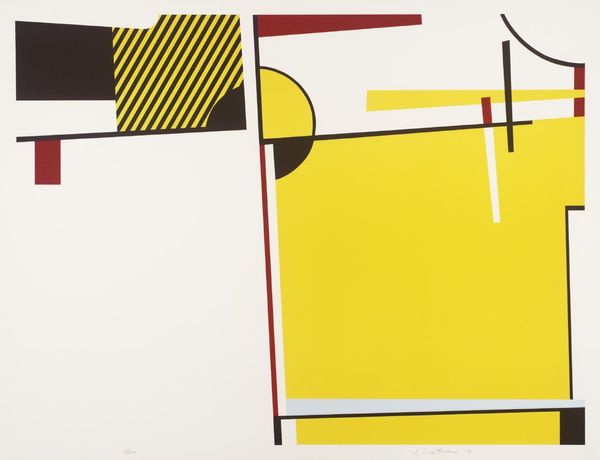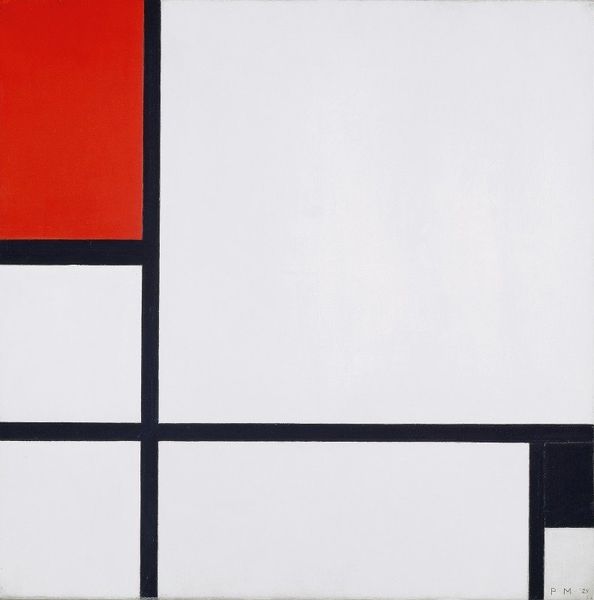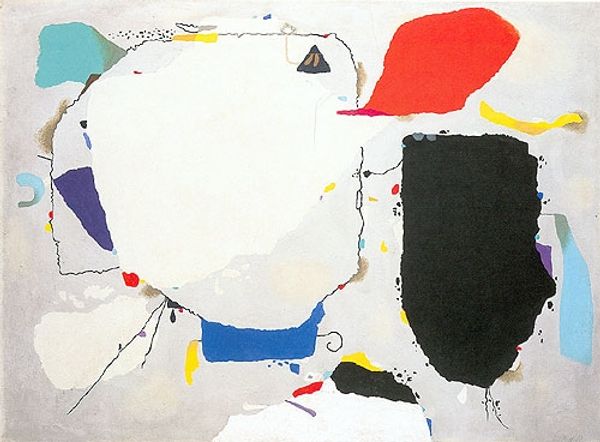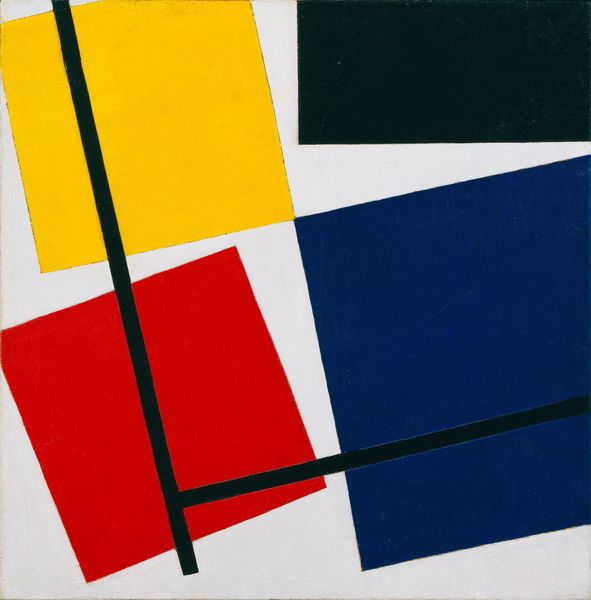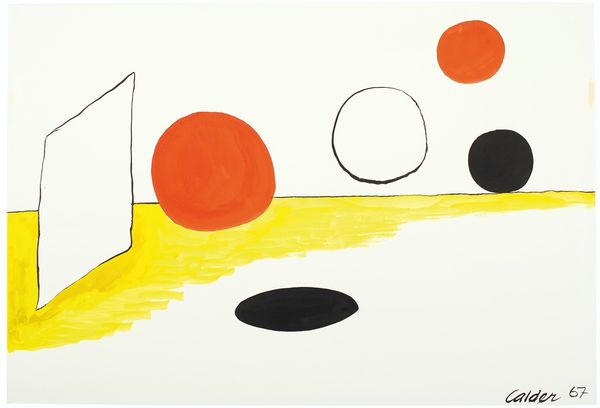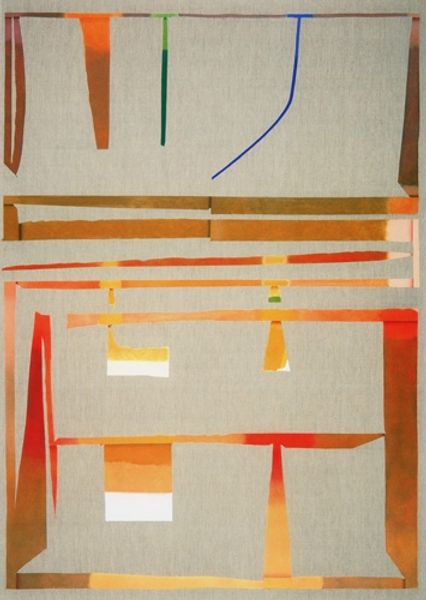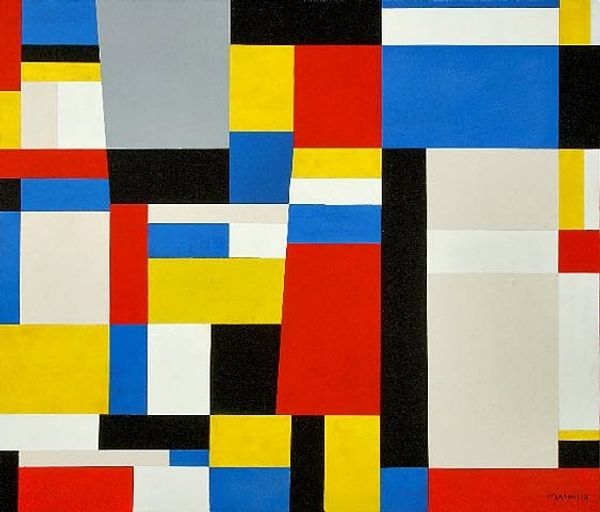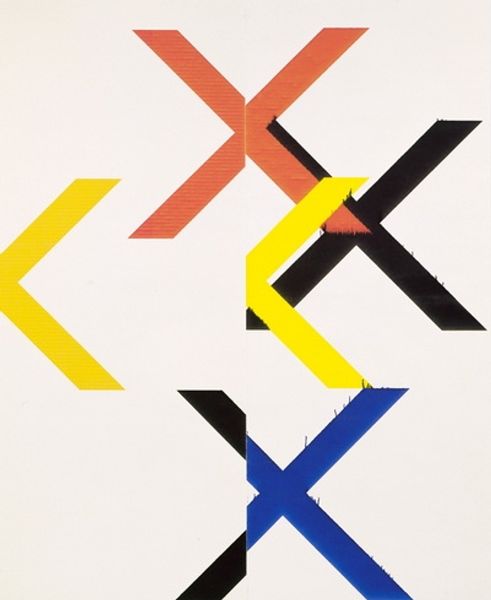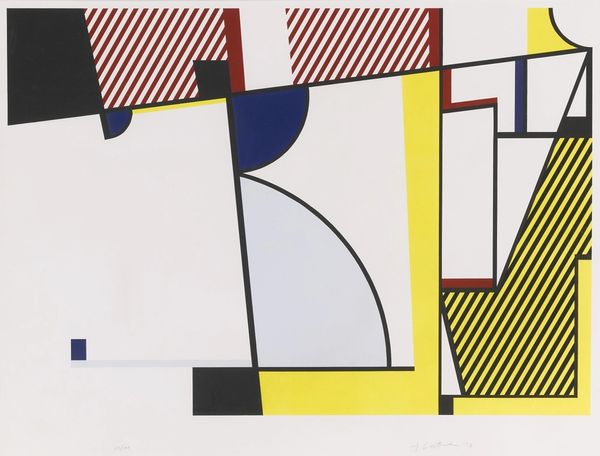
mixed-media
#
mixed-media
#
pop art
#
geometric
#
abstraction
#
line
#
hard-edge-painting
Copyright: Mathias Goeritz,Fair Use
Curator: Welcome! Today, we’re exploring an Untitled mixed-media piece by Mathias Goeritz. Its essence is rooted in hard-edge painting and geometric abstraction. What are your initial thoughts? Editor: The color palette hits me immediately—those stark contrasts! The blacks, reds, blues, and yellow…It feels like a visual declaration of some kind, though I am not sure what. It looks to me like the city and geometric chaos but that somehow creates beauty. Curator: I find resonance in that. Goeritz embraced geometric forms in the postwar period, using geometry and color as foundational components, seeking a visual language to transcend verbal communication. The forms themselves could almost act as archetypes. Editor: Postwar—that's key. There’s a tension, isn't there? The bold geometry speaks to modernism’s promise, but that deliberate lack of specific form... Maybe it reflects a world struggling to redefine itself after devastation. The lack of a definite shape is more poignant considering Goeritz background and influence. Curator: Exactly. The artist worked across several art movements and sought, like many others, a return to simpler and spiritually imbued artforms. Do you find any visual or spiritual continuity? Editor: Definitely a tension, it evokes certain utopian promises through line and form, yet it denies concrete meaning. Those blocks and lines—they could be anything. Perhaps a reflection on utopian aspirations always being just beyond reach, in abstract form? Curator: Fascinating take. It underlines that constant negotiation between clarity and mystery. Geometry providing stability. Then these colors coming from everywhere, but in control. Editor: Or not? Consider how these basic colors and geometric shapes—rectangle, triangle, circle, line—gain complexity in the sociopolitical sphere. It becomes so different, even disturbing. This tension is essential for understanding not just art but societal constructs. Curator: That intersection is where cultural memory lies: it’s both image and echo. I find in these shapes, even without historical data, that he sought the balance between the rational and intuitive as well, and their emotional impact. Editor: Absolutely. Seeing it through the lens of history allows us to read it as more than just color and shapes. It becomes a powerful statement about culture and change. It definitely does provoke conversations that would echo forever through it. Curator: Indeed. Art is often at its best when it resonates both aesthetically and critically. Editor: Thank you, indeed. This exercise was certainly inspiring, just to think how a single image like this is really packed of different meanings and sensations that can change forever our view of art.
Comments
No comments
Be the first to comment and join the conversation on the ultimate creative platform.

